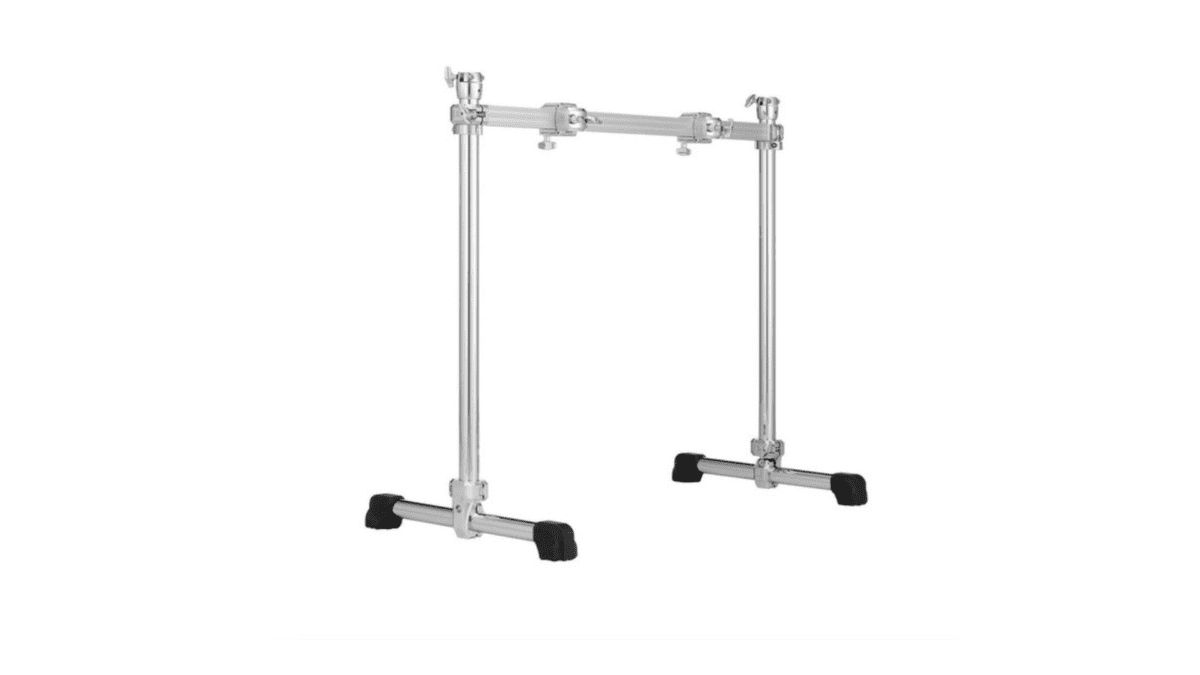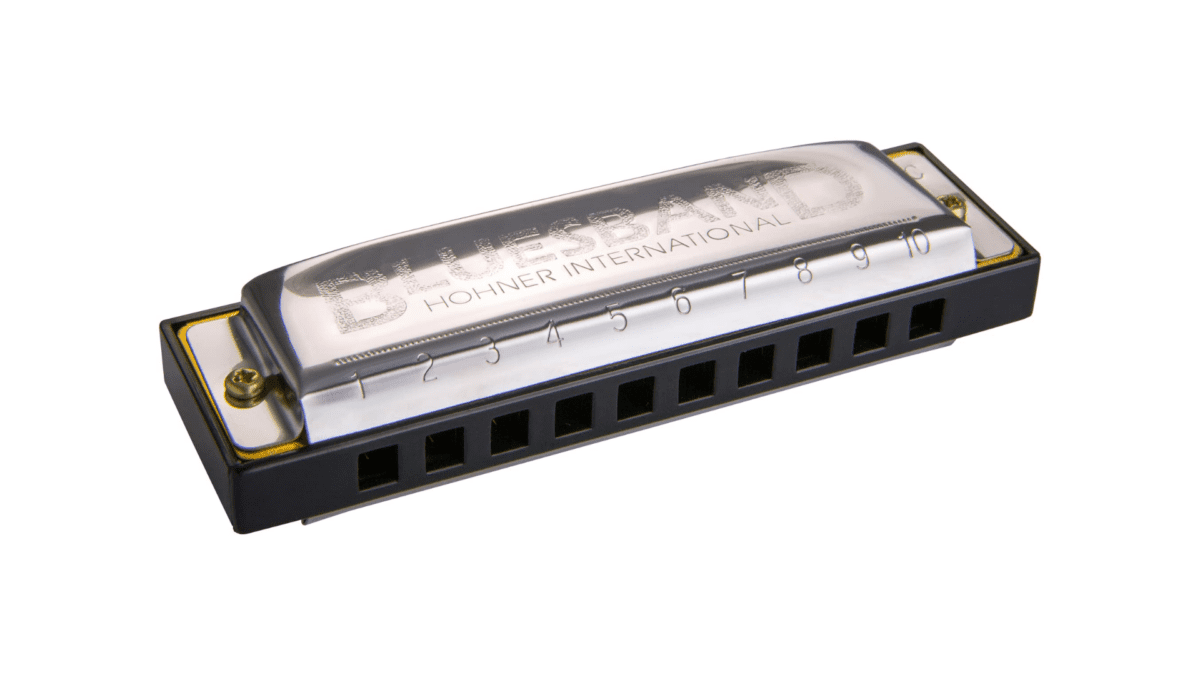Slide guitar is one of the most expressive means of playing an instrument out there. Many have opted to make this particular style their main voice on the guitar. This ranges from the likes of Derek Trucks to Lowell George to Joey Landreth and many more. Like various other players, you may be proficient in playing the guitar the conventional way; however, how to play slide guitar is a whole different ball game.
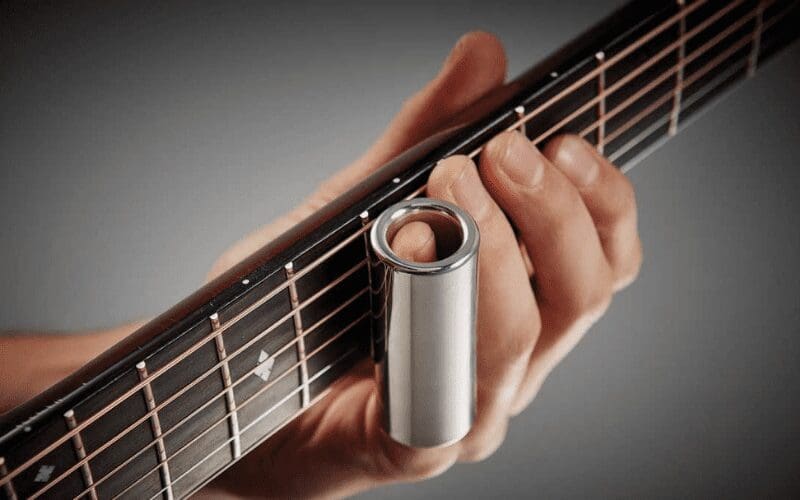
In this article, we will take a look at what slide guitar is and how to play slide guitar convincingly.
Be sure to stick around until the very end so you don’t miss out on any key information!
What Is Slide Guitar?

Slide guitar is playing the guitar, often in open tuning, with a slide. A slide is a piece of material, usually made of glass or brass, that sits on the player’s finger.
Using a slide can achieve a fretless kind of sound and allows the player to access microtones.
Slide guitar is often compared to the sound of a human voice, with players such as Derek Trucks trying to emulate the voices of great soul singers like Aretha Franklin.
For some notable examples, listen to Duane Allman’s slide outro to ‘Layla’ or ‘Midnight In Harlem’ by Tedeschi Trucks Band.
How To Play Slide Guitar
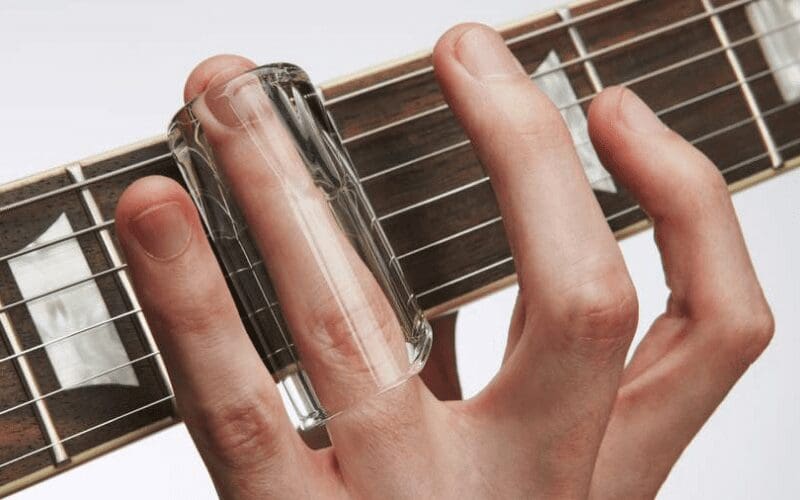
In this section, we will take a look at things to consider when setting up your guitar for slide. Then we will move on to tips for playing slide guitar.
Let’s dive in!
Set-Up
First thing first, let’s take a look at some important information before you start playing!
We will take a look at which tuning to get started with, which finger you should use, and more!
Tuning
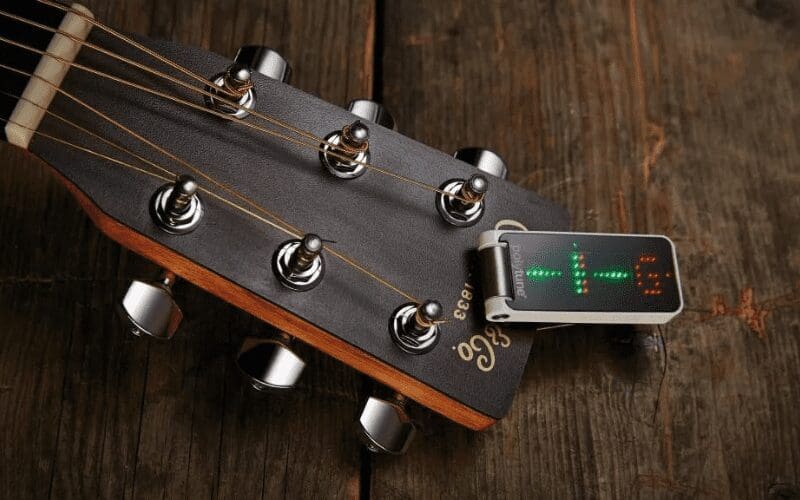
Open tunings tend to be the most popular slide tunings of choice as they can be very forgiving in comparison to standard tuning. Open tuning means that playing all the open strings will play a major chord.
This means that, without having to use your fingers to fret any notes, each string will be in harmony with the others.
In standard tuning, the strings aren’t all in harmony, which means that if you play them all at once, it will sound slightly discordant. Here are some popular tunings to get you started:
- Open E
- Open A
- Drop D
- Open G
- Open D
You can also use our online guitar tuner.
Action
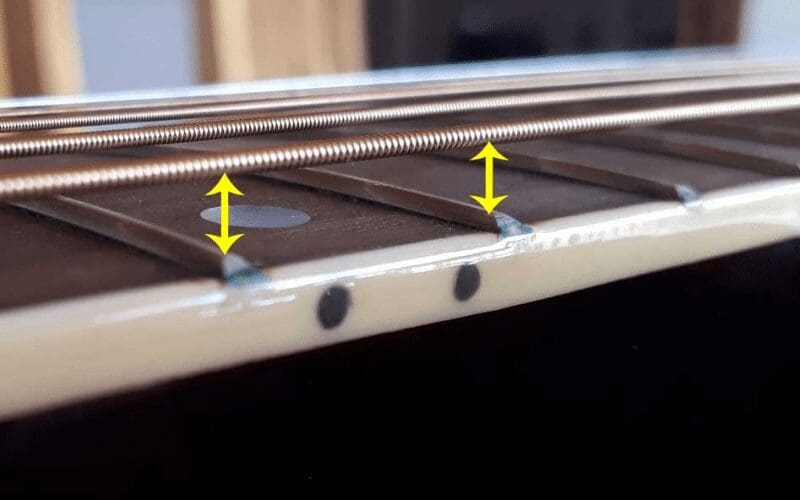
When you set your guitar up for slide, you’re going to want to crank your action up. This stops the slide from touching the frets and making an unpleasant metallic sound.
You can do this by adjusting the saddles on your bridge, normally with an Allen key.
Alternatively, you could also use an extension nut. This is an accessory that sits on your guitar nut and helps raise the action for slide playing.
While this makes the instrument much more forgiving for slide playing, it makes fretting notes almost impossible to play.
It’s always a good idea to practice (or learn) slide guitar on a guitar with an ordinary action. This lets you transition between normal and slide guitar quickly. Additionally, it will make playing with a high extension feel much easier.
Which Finger To Use
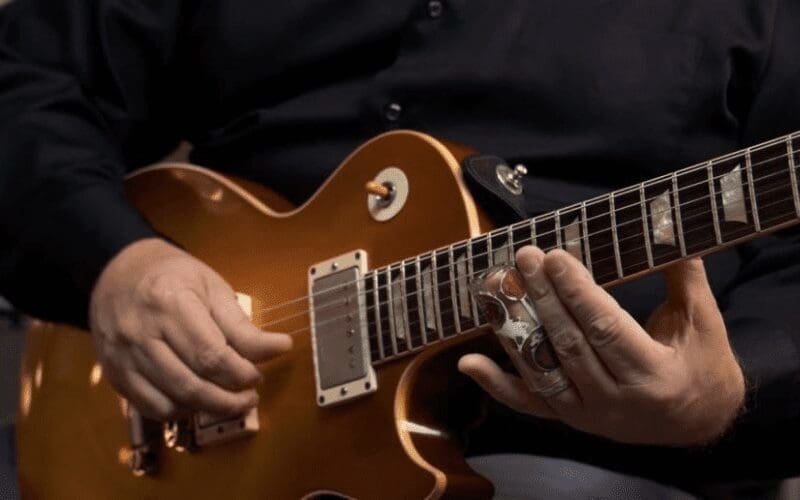
The guitar slide can fit over your second, third, or fourth playing finger. Whichever finger you use is entirely up to you as the player.
However, your choice of finger impacts how you’ll be able to control both the slide and your guitar.
For example, wearing the slide on your fourth finger gives you the freest fingers to dampen individual notes. But the trade-off from this is that it also gives you less stability.
The ring finger is often considered the “sweet spot” for holding your slide. This finger offers a great compromise between securing your slide and keeping two fingers free for refined play.
However, if you have trouble manipulating your third finger, using your second offers even greater control.
It’s all about personal preference, there is no right answer. Take these players as an example:
- Billy Gibbons from ZZ Top uses his second finger
- Duane Allman used his third finger
- Ariel Posen uses his fourth finger
Slide Materials

While we recommend you do, you don’t necessarily have to buy a guitar slide if you don’t want to. Almost anything can be used as a guitar slide, as it’s relatively easy to make an impromptu slide out of everyday items.
The late, great Duane Allman of the Allman Brothers Band used a glass medicine bottle for a slide, and Jimi Hendrix used a cigarette lighter in one of his performances.
Whichever material you use is an entirely personal preference. Glass slides tend to have a smoother and softer sound whereas brass tends to be brasher and more in your face. It might be worth going to your local guitar shop and trying a few out.
Tips For Playing Slide Guitar
Now we’re all set up, let’s take a look at some essential tips for how to play slide guitar!
Let’s jump into some basics of slide guitar.
Fretting Hand Finger Position
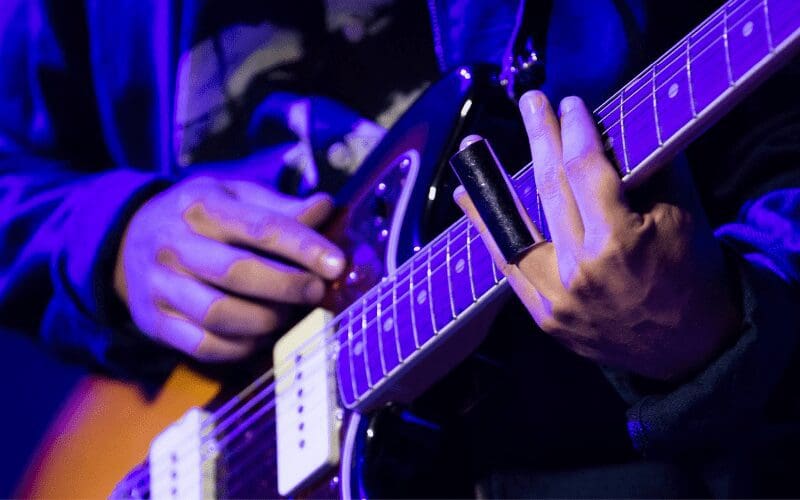
This is probably the most common misconception of slide playing.
The slide should not be in the middle of the fret but at the front end of the fret. For example, for the note of ‘E’ at the 5th fret on the B (2nd) string, the slide should be over the actual fret itself, above that bar that divides fret 5 and fret 6.
If you play with the slide in the middle of the fret, the note will be flat. It’ll only come up to the correct pitch if you hold the slide further forward, right at the divide between the target fret and the next.
In isolation, playing slightly flat might not sound too bad. However, as soon as you’re playing over something, or with a band you’ll hear it right away. You should consider this in your slide technique from the very beginning to improve your intonation.
Great intonation is a hallmark of all the great slide players, Derek Trucks in particular.
Open String Muting
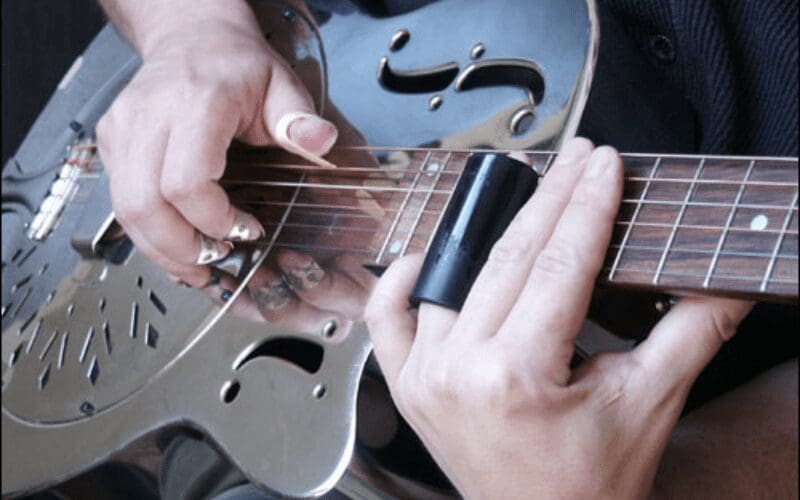
In order to make your playing sound clean, it is important to mute any open strings.
Make sure that when your 3rd finger is moving around the neck with the slide on, your 1st and 2nd fingers should ghost it and sit behind it parallel. In doing this you should dampen the strings as a basis from which the sliding finger can play.
This means that then the note the slide is playing is the only note you’ll hear. If you don’t do this, the other strings may ring out. They will surround the slide note and you will lose clarity. This will just make things sound messy.
How Much Pressure To Apply
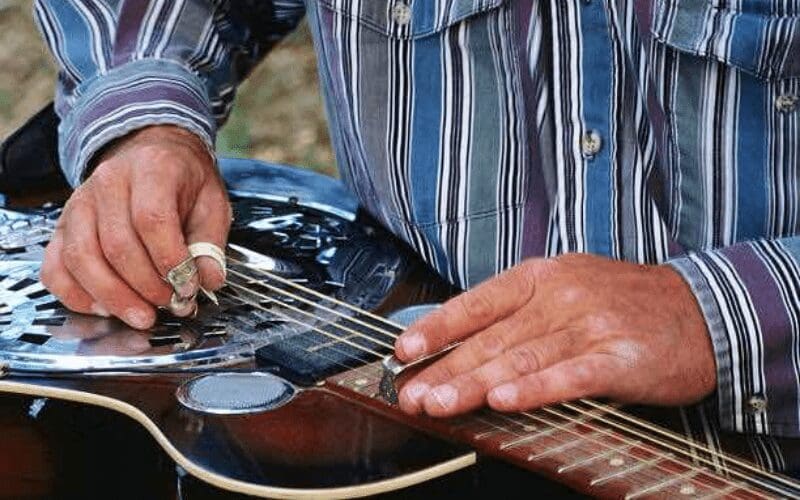
The short answer is it’s about the same pressure as a natural harmonic.
The perfect amount of pressure is when the slide is in contact with the string, but the string is not being pressed down onto the fretboard. If the string makes contact with the fretboard, you’ll get that unwanted buzzing noise we discussed earlier.
The right technique almost imagines the fretboard isn’t there at all. You’re simply moving the slide along a string suspended in mid-air, with no fretboard.
There’s a small margin between not touching the string at all and pressing the string down onto the fretboard, where good slide playing happens. This is why having a reasonably high action is key.
Slide Songs For Beginners

Now we’ve discussed the setup and some techniques, it’s time to get into what matters – playing songs!
Here are some easier songs to get you started:
- Seven Nation Army by The White Stripes
- Feelin’ Bad Blues by Ry Cooder
- I Ain’t Superstitious by Jeff Beck
- Sharp Dressed Man by ZZ Top
These songs will get you used to playing slides and get you familiar with the feeling. After you’ve got these down then the world is your oyster! Maybe next time, you can show us how to play Freebird on slide guitar!
Cigar Box Slide
The cigar box slide is slightly different from a conventional six-string. So, let’s take a look at how to play the cigar box guitar slide.
What Is A Cigar Box Slide Guitar?
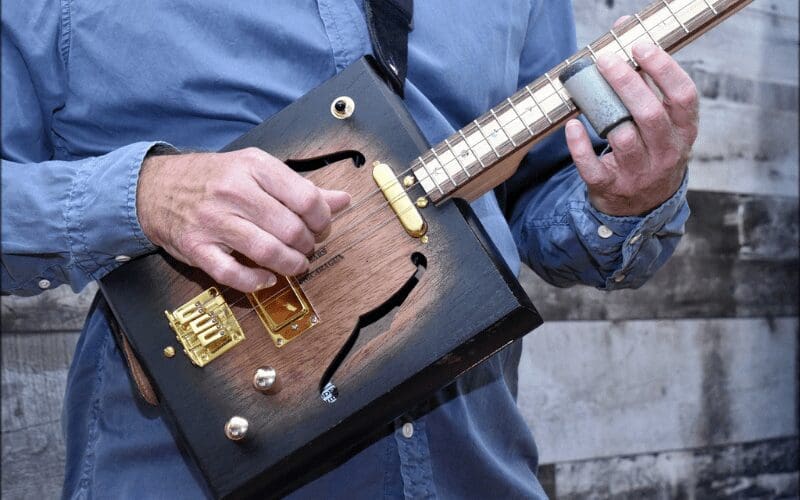
A cigar box slide guitar instrument made with a cigar box, a wooden neck, and steel strings attached. The first mention of a cigar box instrument dates back to the mid-1860s. The oldest known reference to the instrument is from a drawing during the American Civil War at the “Siege of Charleston.”
Many luthiers are producing highly crafted instruments available for custom order. The modern Cigar Box Guitar continues to be made from authentically sourced cigar boxes.
However, many luthiers also make custom-built boxes with similar dimensions. The 3-String Cigar Box Guitar is more common than the 4-String version, with GDG or GDGB as the preferred tuning.
Both versions typically come with at least one electric pickup for amplification.
The principles of slide playing stay the same with this instrument despite its different tunings. So bear in mind all the information in this article for cigar box playing also!
That Was Our Guide On How To Play Slide Guitar

So there we have it! We’ve taken a look at everything you need to know on how to play slide guitar. Also, we’ve touched on what slide guitar is and the necessary steps you need to take to set your guitar up for slide.
We’ve also touched on some basics for slide guitar you need to consider and some songs to get you started.
Slide guitar is a beautiful means of playing the guitar that offers a highly unique sound.
In order to improve your slide playing, listening to the greats is a great way to stay inspired. Keep in mind Duane Allman, Ry Cooder, and Derek Trucks, and listen to their idiosyncratic styles.






